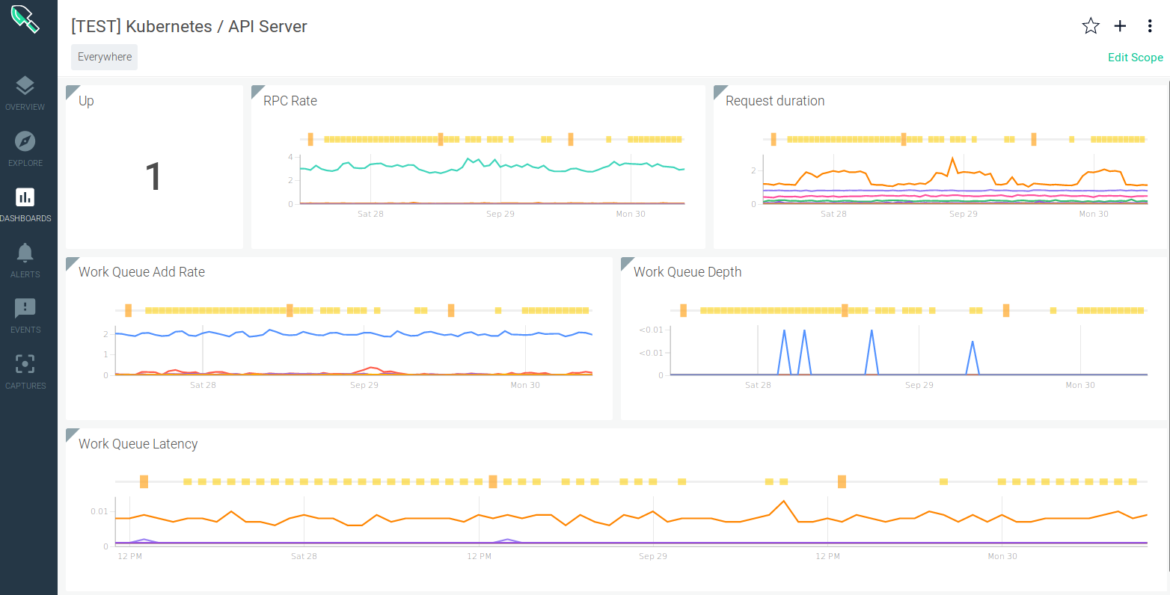
This set of flags is not documented but still available for use. replication-controller-lookup-cache-size Kubernetes default values can be found in the kube-controller-manager documentation. For smaller clusters, if you are tight on memory, you can lower the settings.
#What is kubernetes api server free
For larger clusters, feel free to increase default values as long as you are OK with its memory usage. In general, increase settings for components you use more intensively. Increasing parallelism means Kubernetes will be more agile when updating specs, but also allows the controller manager to consume more CPU and memory. Kube-controller-manager has a set of flags that can provide fine-grained controls of parallelism. Generally speaking, 60MB per 20~30 Pods is a good assumption to make.Ĭontainer memory request can be set to equal to or greater than this value. The kube-apiserver uses the same assumption as the above mentioned Kubernetes benchmark: 120GB for ~ 60,000 Pods, 2000 nodes, which is equivalent to 60MB / Node, and 30 Pods on each node. This value is used for kube-apiserver to guess the size of the cluster and to configure the deserialize cache size and watch cache sizes inside the API server. Generally speaking, 15 parallel requests per 25~30 Pods is sufficient. Kube-apiserver getting OOM (Out Of Memory) killed because it is trying to process too many requests in parallel. If it is too low, you will see too many request-limit-exceed errors. With the latest Kubernetes release, they provide more fine-grained API throttling mechanisms with " -max-requests-inflight" and " -max-mutating-requests-inflight"Īdjust this value from the default (400) until you find a good balance. The API server can be very CPU intensive when processing a lot of requests in parallel. This flag will limit the number of API calls that will be processed in parallel, which is a great control point of kube -apiserver memory consumption. As a reminder, our usage of these flags was tested specifically for high churn workloads. The following is a summary of the knobs that we adjust for Applatix's production clusters. In general, careful consideration of your particular workload is needed to properly configure your Kubernetes cluster for the desired level of stability and performance. With the Applatix production workload, the Kubernetes master components' memory usage is very sensitive to Pod churn, and much more memory is needed than compared with the official recommendation. Although a certain fraction of mutating workloads is added in such benchmarks, the benchmark workloads are relatively static compared to a typical DevOps workload, where there can be hundreds of Pods spinning up and down every minute. Based on benchmarking information about Kubernetes and perusing Kubernetes source code, Kubernetes officially recommends 32-cores and 120GB-memory for a 2,000 node, 60,000 Pod cluster. Watches Service and Endpoint objects from kube-apiserver and modifies the underlying kernel iptable for routing and redirection.Ī rule of thumb is that Kubernetes workload and resource consumption are directly related to the number of Pods and rate of Pod churn (starts & stops) cluster wide.

pull images, run containers, check container health, delete containers and garbage collect containers) mount volume), talking with container runtime to manage Pod life cycle (i.e. The procedure of Syncing Pods requires resource provisioning (i.e.

It watches Pods via kube-apiserver and looks for Pods that are assigned to itself. kubelet: A Kubernetes worker that runs on each minion.kube-scheduler assigns minions based on available resources, QoS, data locality and other policies described in its driving algorithm

kube-scheduler: Gets pending Pods from kube-apiserver, assigns a minion to the Pod on which it should run, and writes the assignments back to API server.kube-controller-manager: Runs control loops that manage objects from kube-apiserver and perform actions to make sure these objects maintain the states described by their specs.Etcd: A highly available key-value store for kube-apiserver.
#What is kubernetes api server update
An operation mutates (create / update / delete) or reads a spec describing the REST API object(s) Pods, Deployments, Stateful Sets, Persistent Volume Claims, Secrets, etc.


 0 kommentar(er)
0 kommentar(er)
